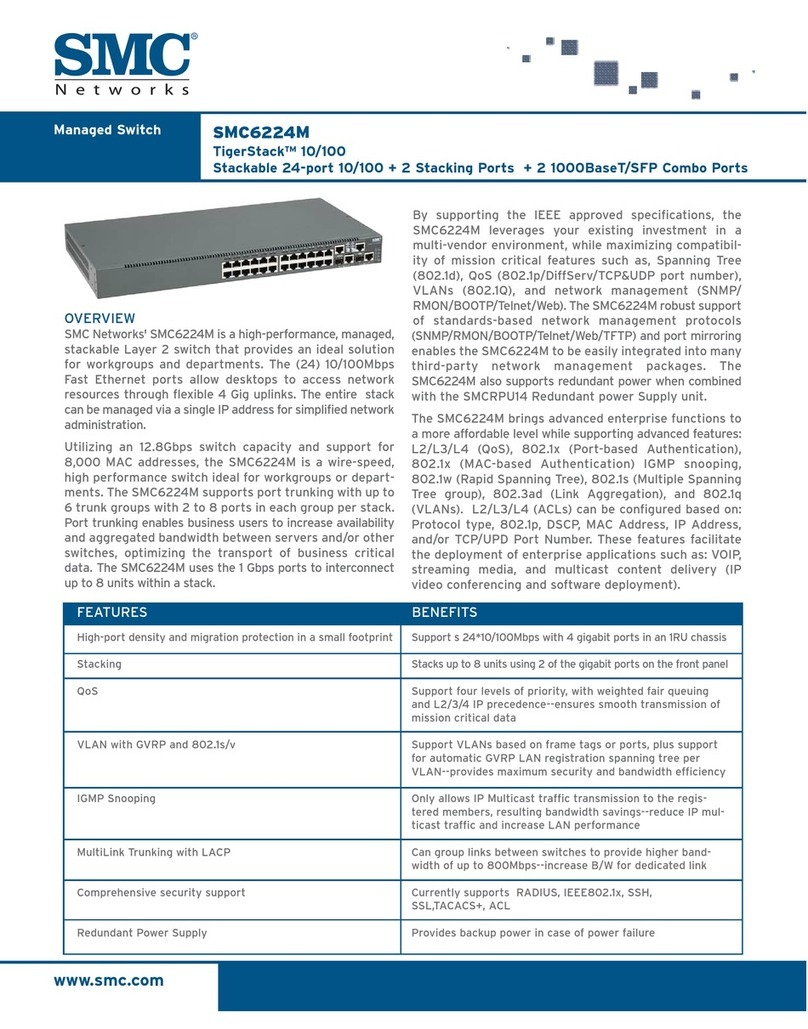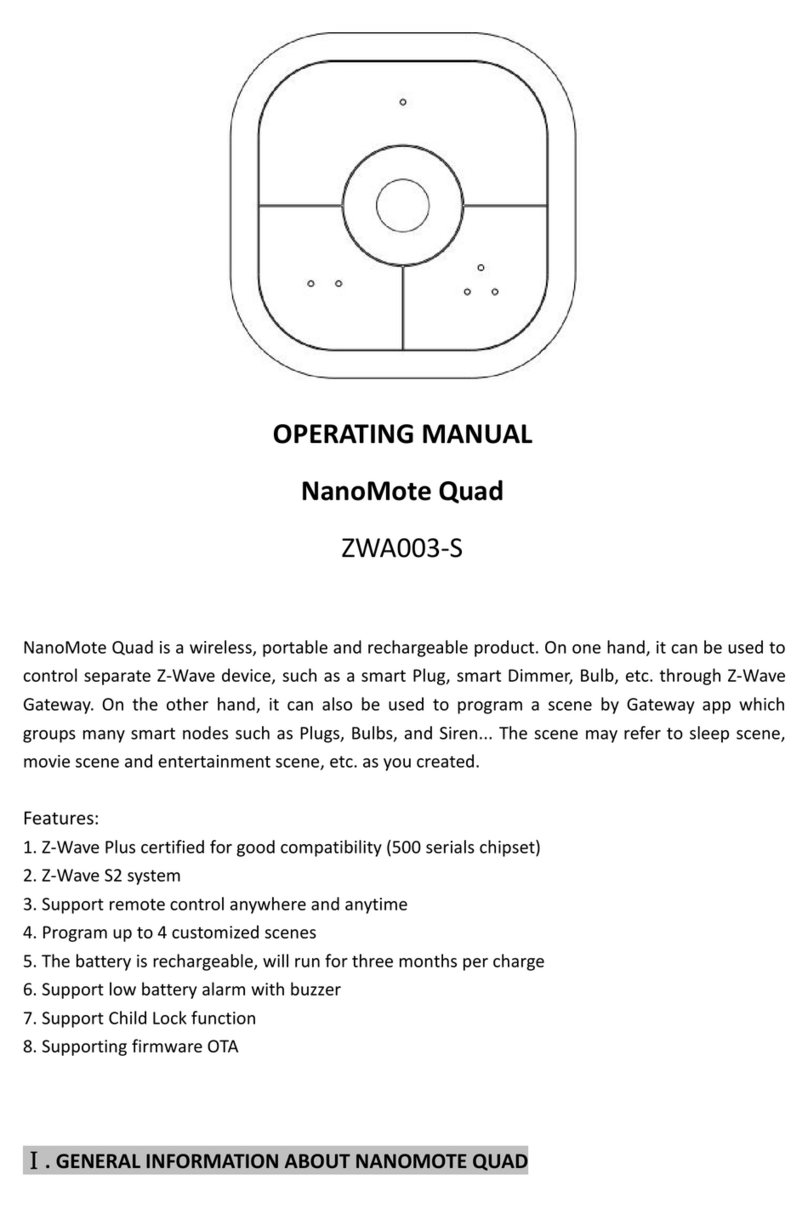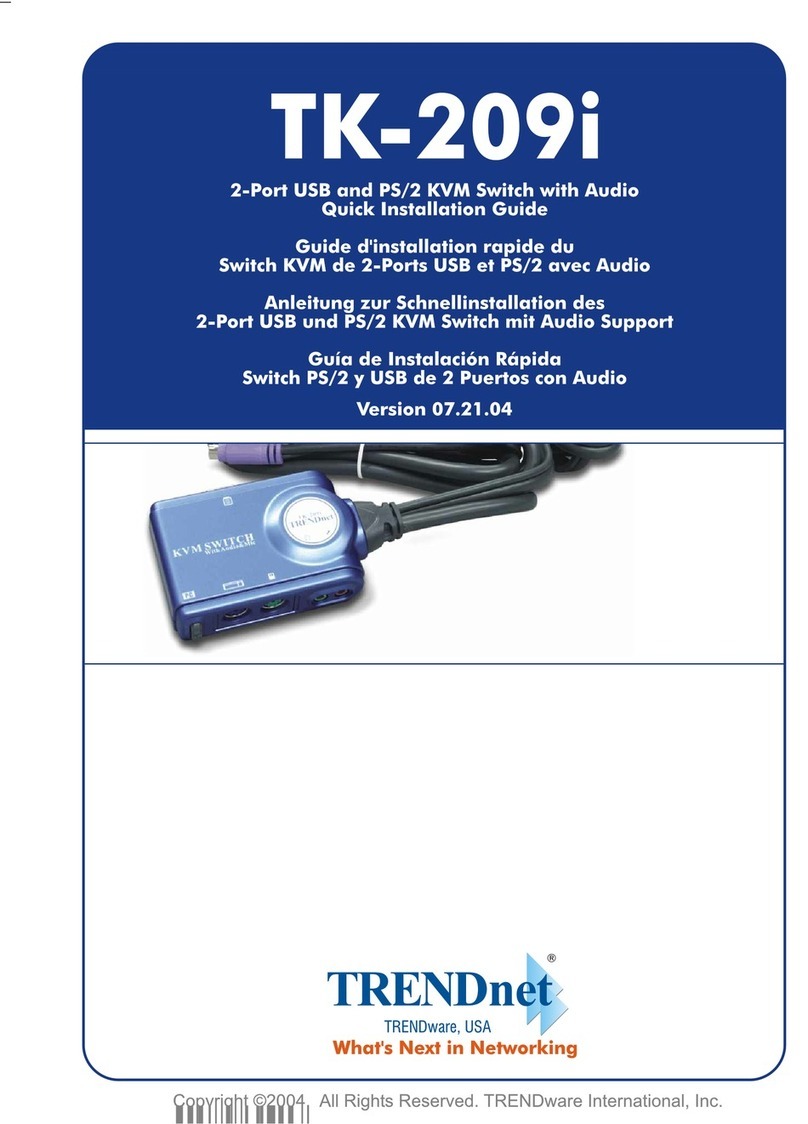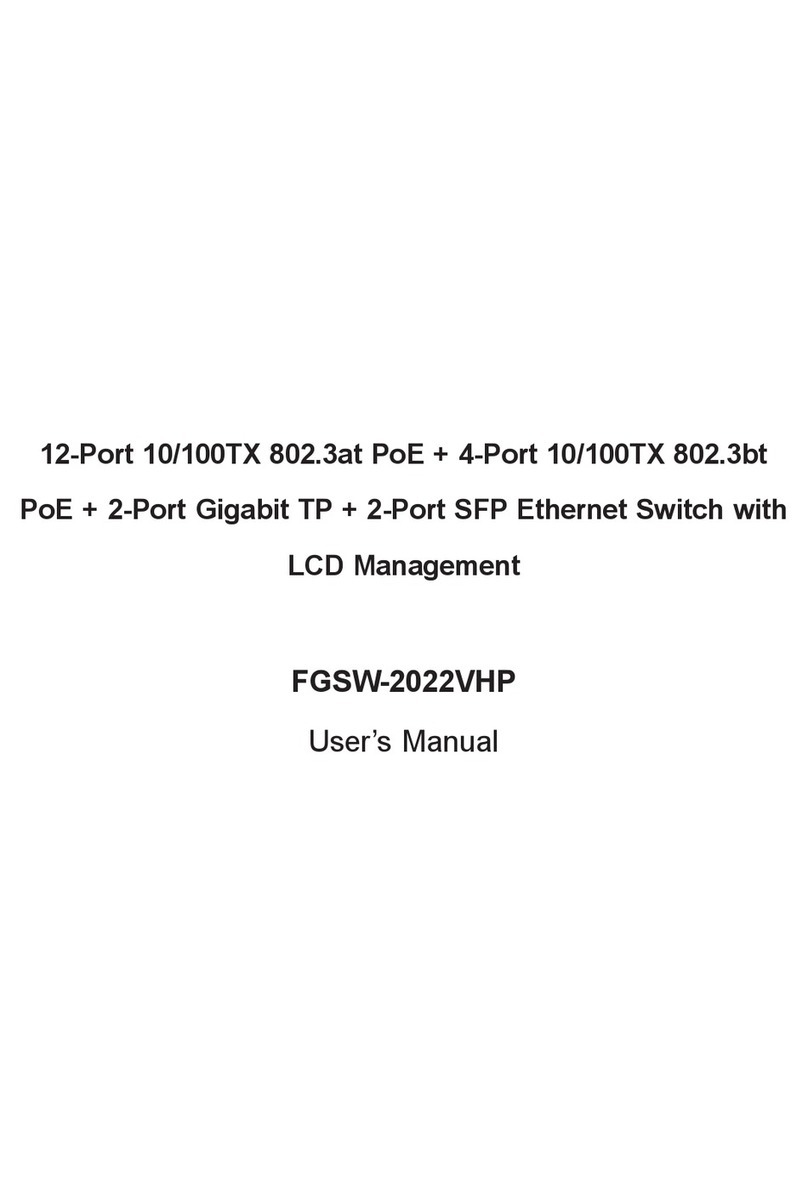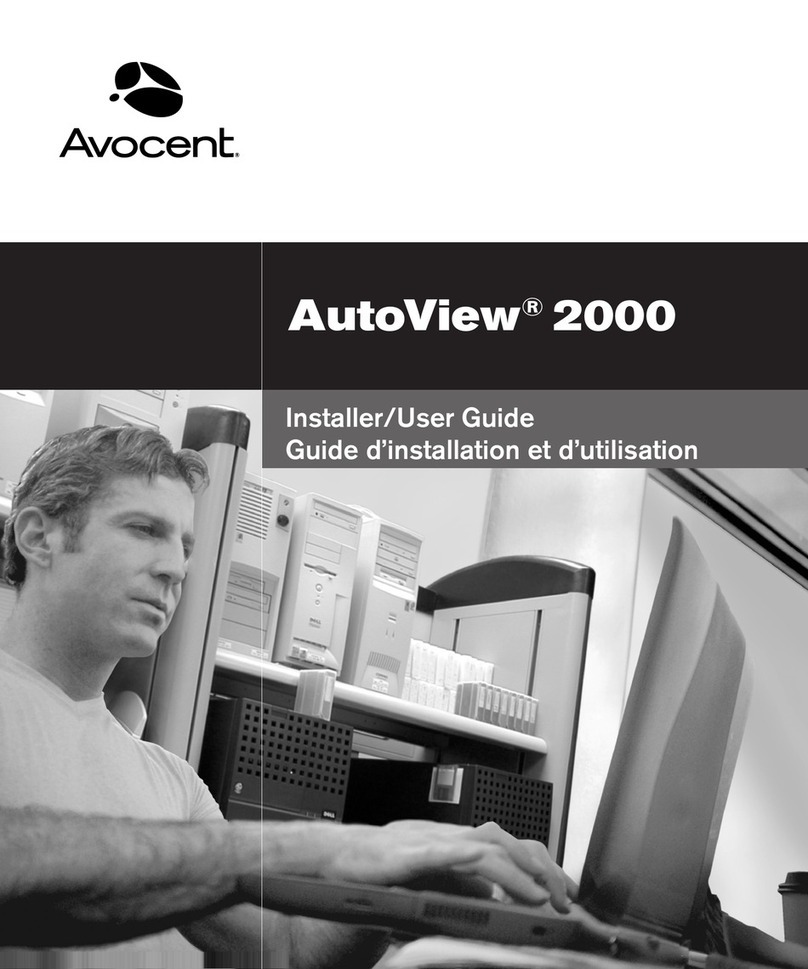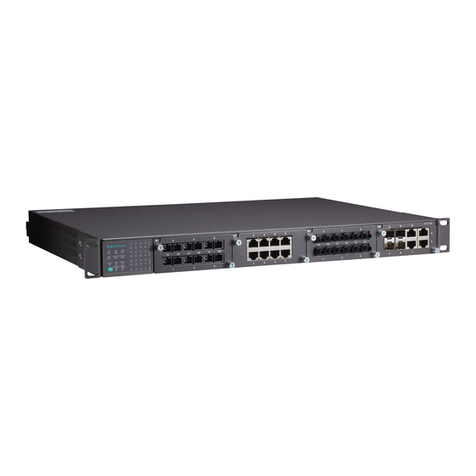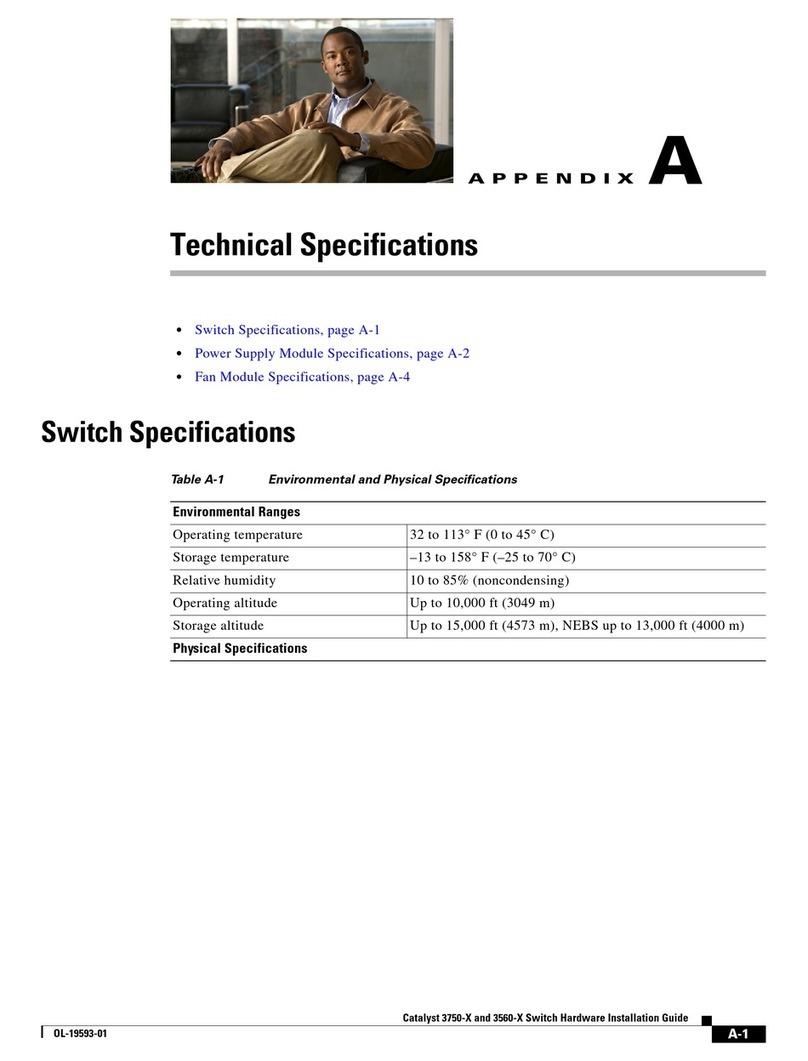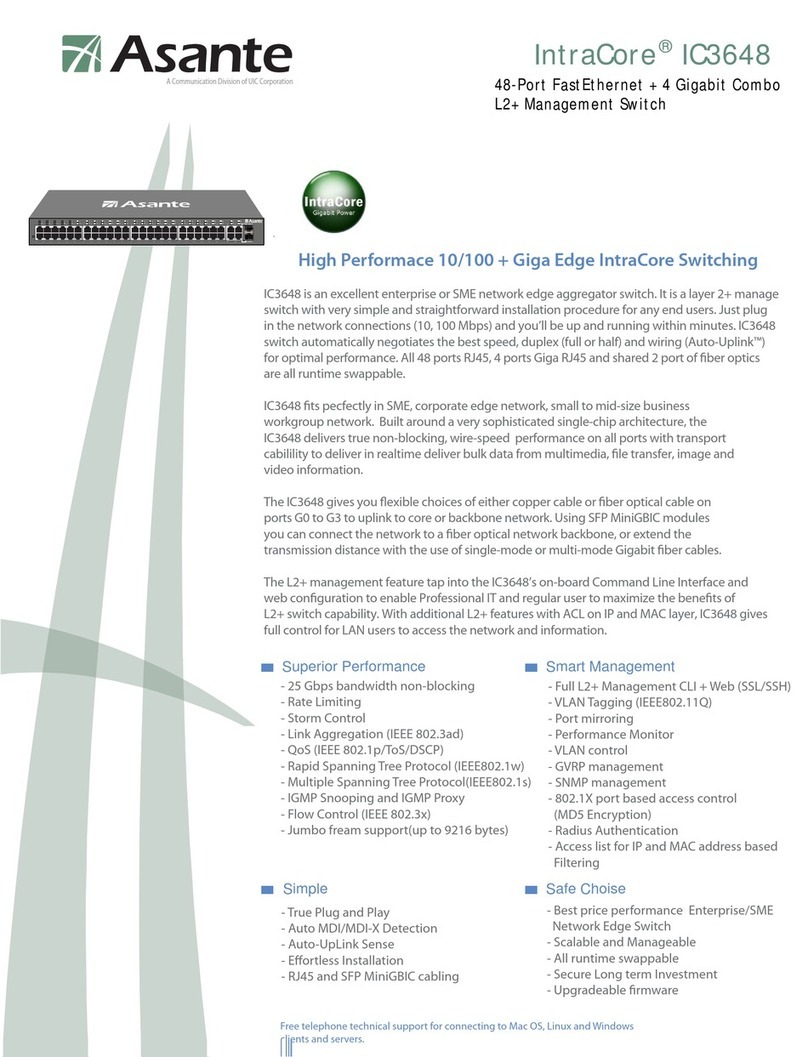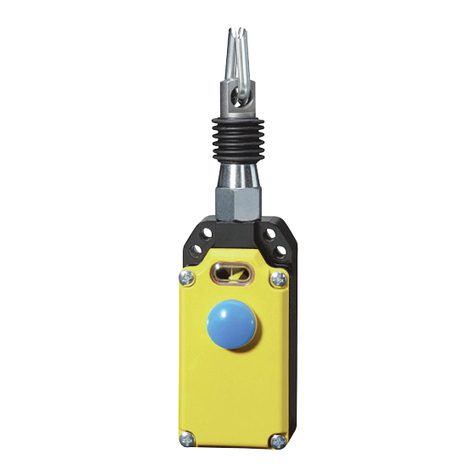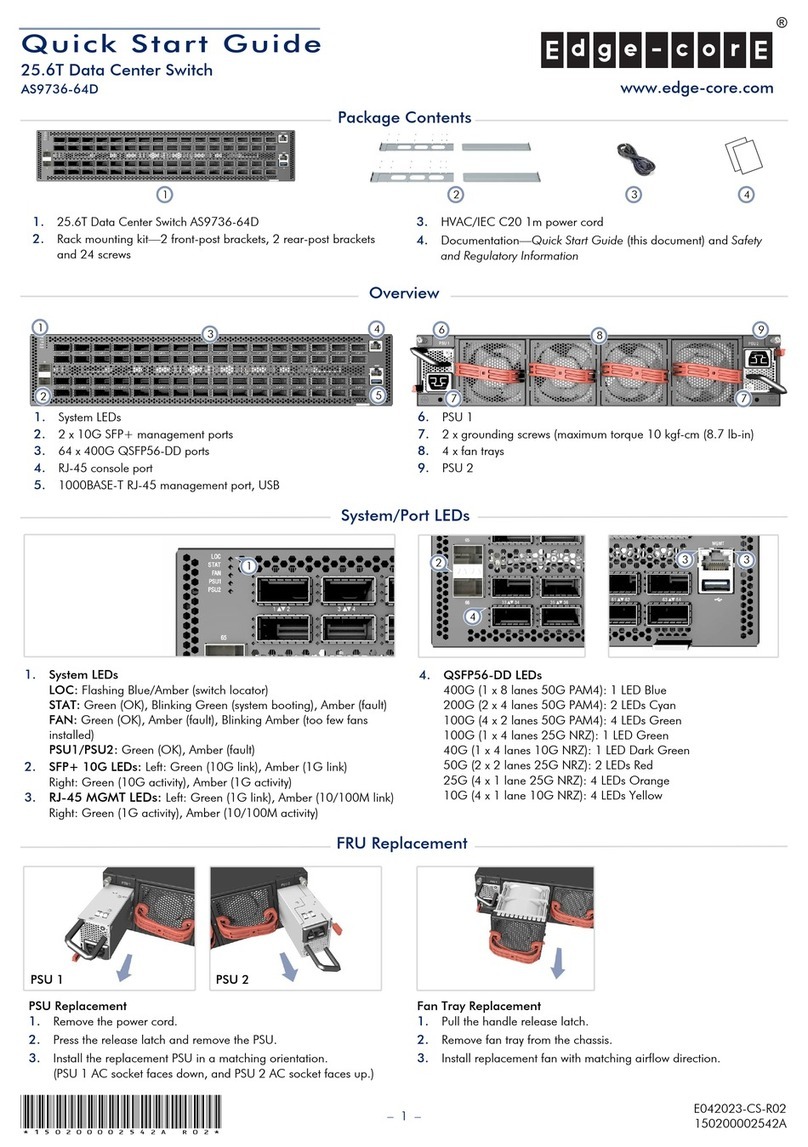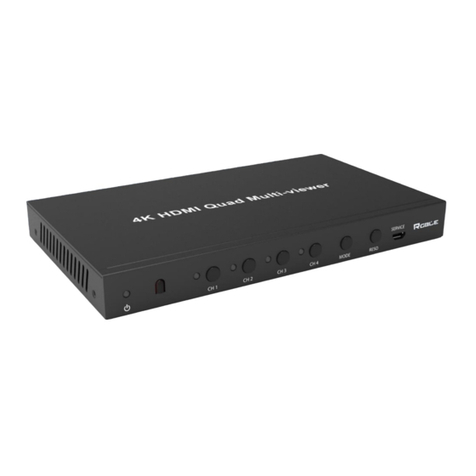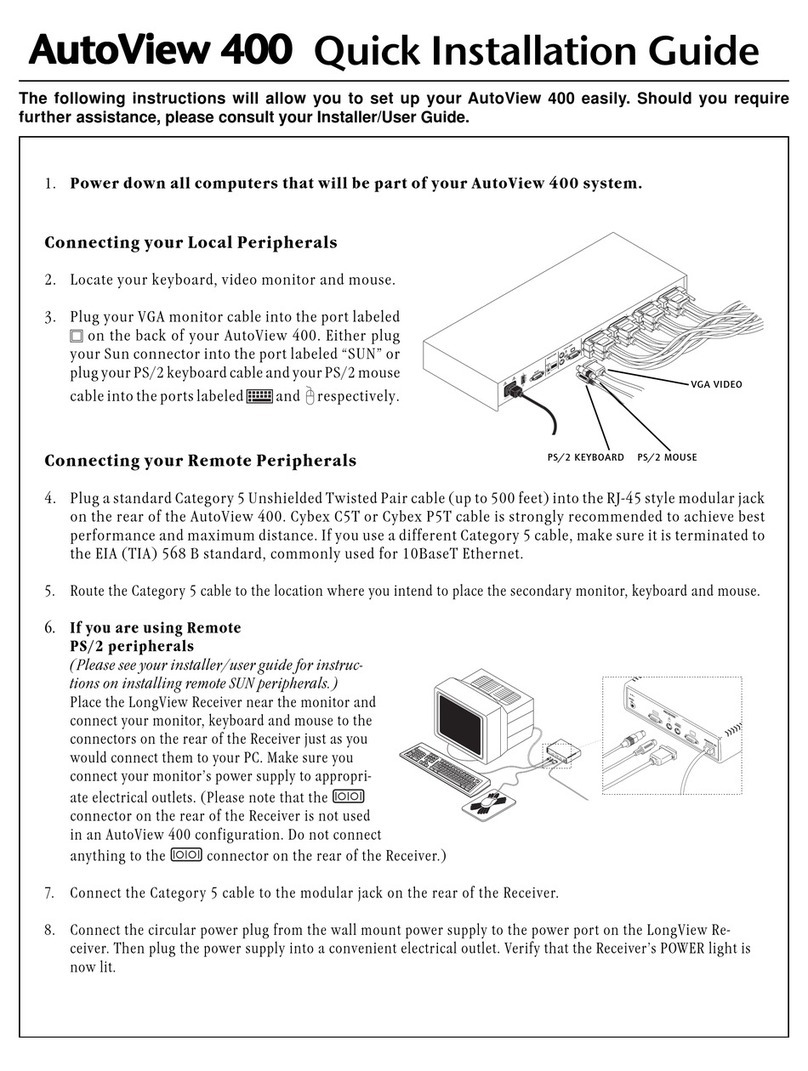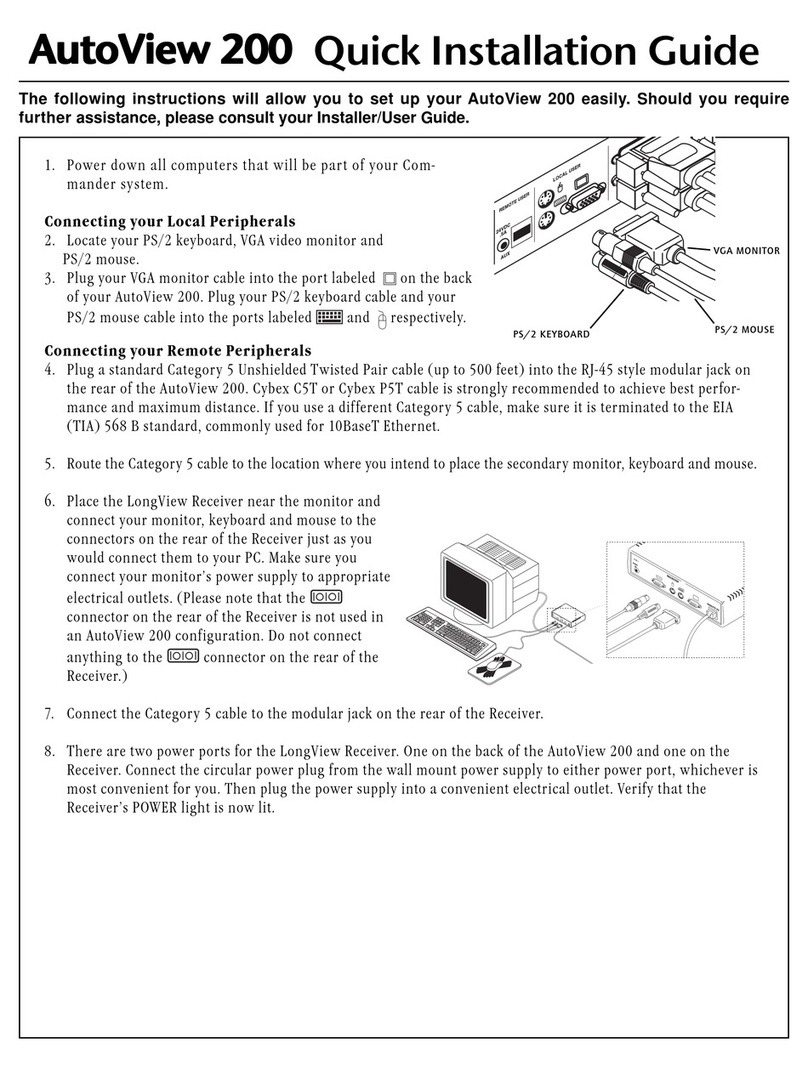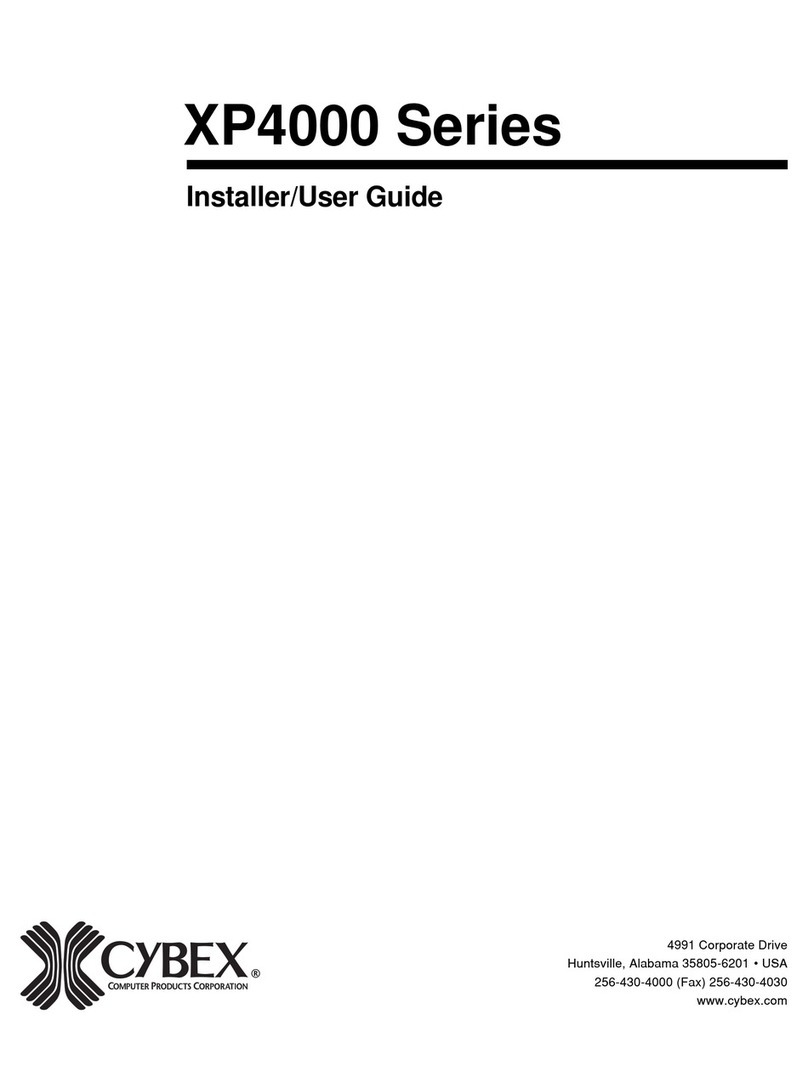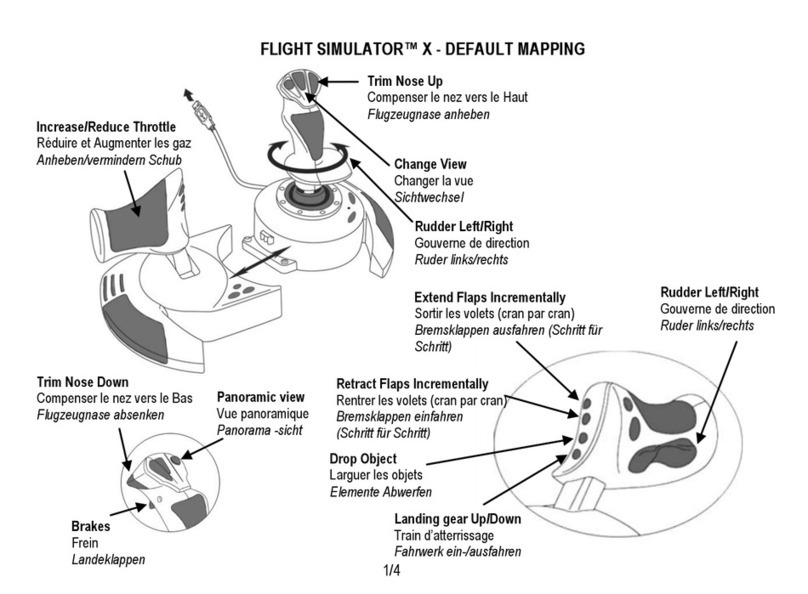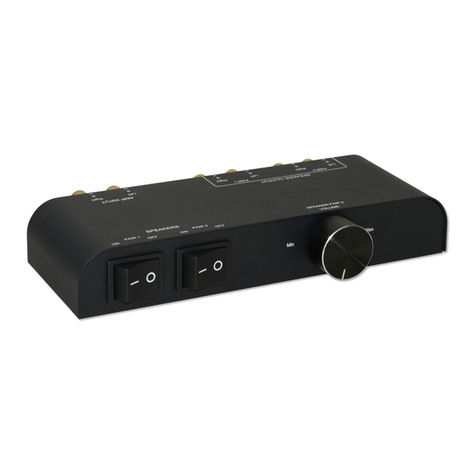Table of Contents
Chapter 4 - n-Screen Display perations
Activating OSD ...................................................................................................................................... 13
The OSD Window .................................................................................................................................. 14
The Command Menu ........................................................................................................................... 15
Basic Channel Maintenance ............................................................................................................. 16
The ID Window ...................................................................................................................................... 18
Administrator Functions ..................................................................................................................... 20
Chapter 6 - Appendices
A: Specifications .................................................................................................................................... 27
B: Pairing .................................................................................................................................................. 28
C: Troubleshooting................................................................................................................................ 34
D: Problem Report................................................................................................................................. 39
Chapter 5 - Channel Scanning
Choosing a Scanning Method .......................................................................................................... 23
Setting the Scanning Order ............................................................................................................... 24
Turning Scanning On and Off........................................................................................................... 24
Setting the Scanning Dwell Time .................................................................................................... 25
Scanning and Security ......................................................................................................................... 26
Chapter 2 - Installation
Basic Install ................................................................................................................................................ 5
Advanced Install ....................................................................................................................................... 8
Chapter 1 - Product verview
Feature Overview ...................................................................................................................................... 1
Compatibility ............................................................................................................................................. 3
Chapter 3 - Basic perations
Overview ...................................................................................................................................................... 9
Keyboard Control .................................................................................................................................. 10
Keyboard Switching ............................................................................................................................. 11
System Control & Maintenance ....................................................................................................... 12
